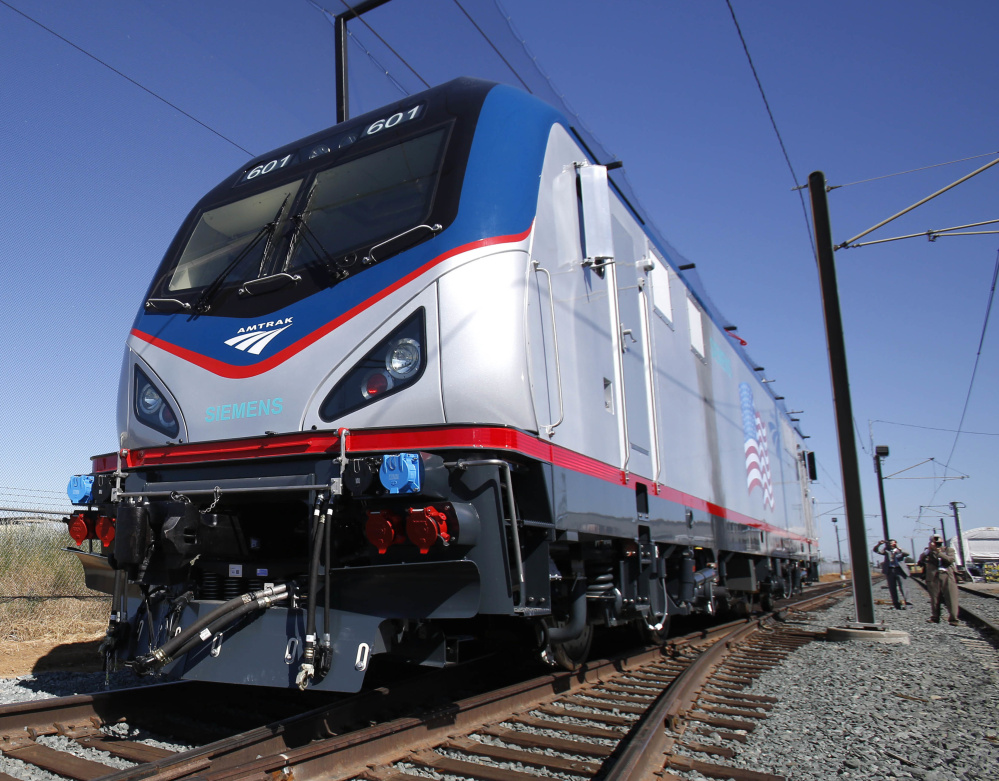The new engines, built in California, are mostly used on the Northeast Corridor with ‘heartening’ results.
NEWARK, N.J. — The introduction of 70 new locomotives on Amtrak’s most heavily traveled line three years ago has contributed to a reduction in engine- related delays of nearly 25 percent, the national passenger railroad said Thursday.
The last of the ACS-64 locomotives, called American Cities Sprinters, is being rolled out this month. They were put into service beginning in the summer of 2013 to replace an aging fleet that had been in operation for 20 to 30 years and had been driven an average of 3.5 million miles.
The new engines are used on Amtrak’s Northeast Corridor line between Washington, D.C., and Boston, and its Keystone service between Philadelphia and Harrisburg, Pennsylvania.
Statistics provided by Amtrak show there were 1,138 locomotive-related delays in the 10 months ending in July 2013. That number dropped nearly 25 percent, to 857 delays, for the similar period ending last month.
“Anything brand new should operate better than the old stuff, but what we’ve experienced so far is significantly better than what we expected,” Amtrak chief operating officer D.J. Stadtler said.
More technologically advanced than the older engines, the ACS-64s feature a dashboard with an electronic screen that can tell an engineer what problems to look for even before they happen, Stadtler said. That has led to a 10 percent decrease in the time of the average delay, he said.
“When the engineer calls in, in the old days there would be a checklist he’d have to go through,” he said. “Now there is a code on the dashboard, and they can say, ‘OK, go right here.’ It really isolates the incident.”
The engines were built in Sacramento, California, by Munich, Germany-based Siemens AG. As a condition of the federal loan used to build them, the majority of the products and materials used had to have been made in the U.S. More than 60 suppliers in 20 states contributed parts, according to Amtrak.
Stadtler said Amtrak is committed to paying back the $466 million federal loan for the locomotives over 25 years using net profits from the Northeast Corridor line.
The cost of the new locomotives is relatively small compared to Amtrak’s ongoing multibillion-dollar plans to upgrade infrastructure on the Northeast Corridor, some of which is 80 to 100 years old.
The reduction in delays “is heartening,” said Sean Jeans-Gail, vice president of government affairs for the National Association of Rail Passengers, an advocacy organization.
“It shows that, granted we have tens of billions of improvements we need to be made on the Northeast Corridor, but there’s low-hanging fruit out there,” Jeans-Gail said. “It’s good that we have these success stories to talk to Jane Q. Taxpayer about and say, ‘This is the benefit of this investment.'”
Send questions/comments to the editors.


